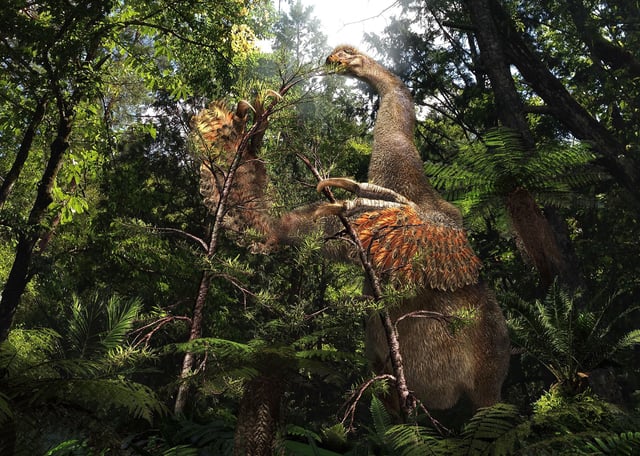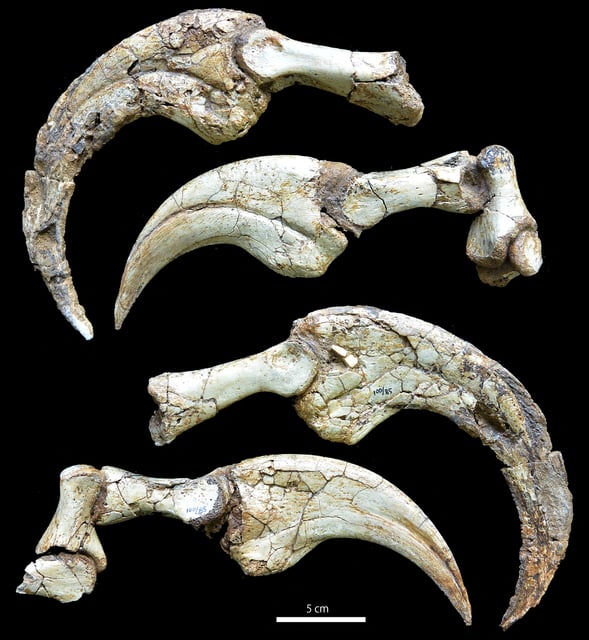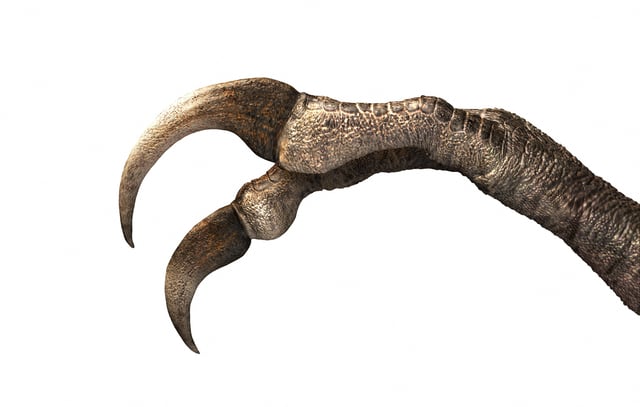Overview
- Duonychus tsogtbaatari, a newly identified therizinosaur species, was officially described in the journal iScience, marking a significant paleontological discovery.
- The dinosaur, unearthed in Mongolia's Gobi Desert, is the first therizinosaur known to have only two fingers instead of the typical three.
- Exceptionally preserved fossils include keratin sheaths on its claws, making them the largest three-dimensional dinosaur claws ever found.
- Researchers suggest the dinosaur's claws were adapted for grasping vegetation, pulling down branches, and potentially for defense or display.
- The discovery highlights the Gobi Desert's importance as a fossil-rich site and advances understanding of digit reduction and evolutionary adaptations in theropods.


